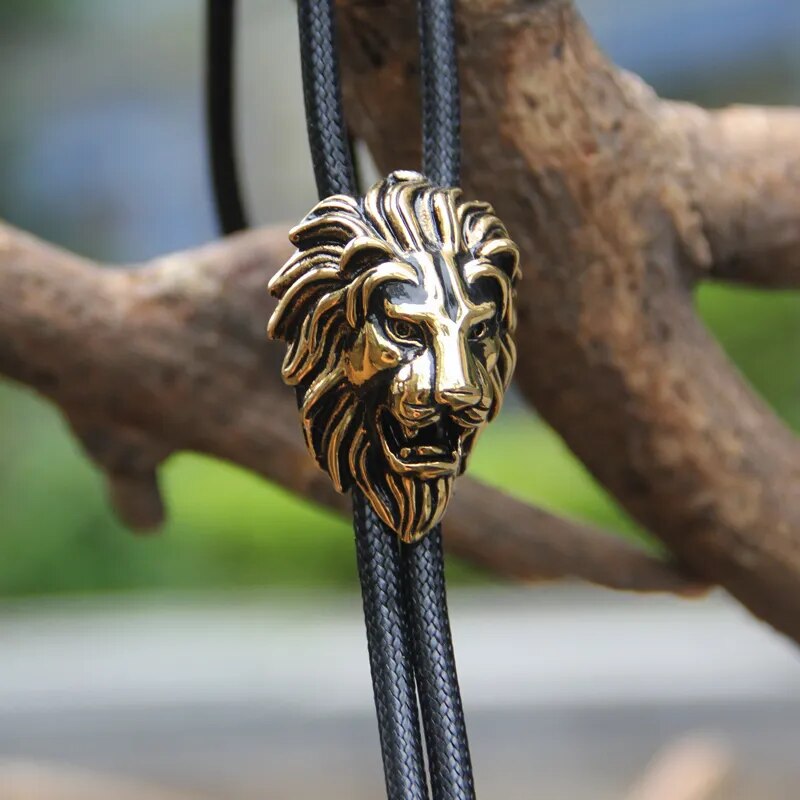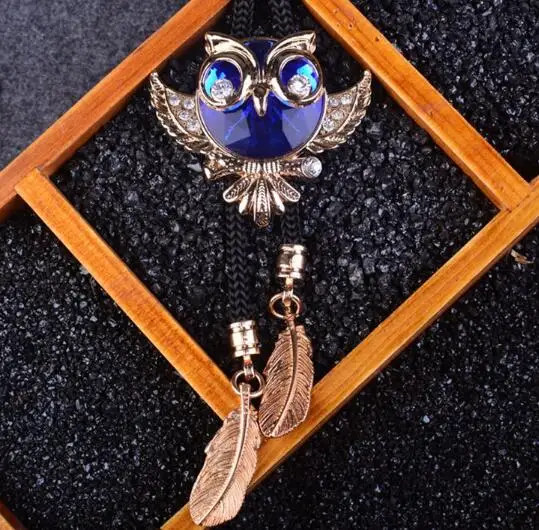
The bolo tie, a seemingly simple piece of neckwear, holds within its braided cords and ornamental clasps a rich tapestry of history, culture, and individual expression. It has journeyed far from its humble origins in the American Southwest, evolving into a symbol of both Western heritage and contemporary style. Today, we’ll delve deeper into the captivating narrative of this item, exploring its historical roots, its multifaceted benefits, the diverse styles it encompasses, and its enduring significance in the modern fashion landscape.
This accessory, far from being a mere decorative item, serves as a bridge between generations, carrying the echoes of a bygone era while simultaneously adapting to the ever-shifting currents of modern fashion. It is a testament to the enduring appeal of craftsmanship and the human desire for unique expression, a subtle yet powerful declaration of individuality that transcends fleeting trends and speaks to a deeper connection with cultural identity.
Tracing the Threads of Time: From Accidental Invention to Cultural Icon
The story of this is a testament to the serendipitous nature of innovation. In the vast expanse of the American Southwest, where rugged landscapes meet vibrant cultures, the bolo tie emerged as a practical solution to a common problem. Victor Cedarstaff’s accidental creation, born from a loose hatband and a spirit of ingenuity, resonated with the region’s inhabitants. Cowboys, ranchers, and artisans alike recognized the practicality and aesthetic appeal of this unique neckwear.
This design, a harmonious blend of cultural influences, reflects the region’s diverse heritage. Native American jewelry, with its intricate silverwork and vibrant turquoise accents, contributed to this accessory’s ornamental beauty. Western craftsmanship, characterized by its rugged durability and functional design, shaped it’s practical form. And Spanish colonial traditions, with their emphasis on ornate detailing and decorative flourishes, added a touch of elegance to the bolo tie’s overall aesthetic.
This accessory’s journey from a regional accessory to a national symbol was solidified in 1971 when it was designated as the official neckwear of Arizona. This designation, far from being a mere formality, underscored this item is cultural significance and its enduring connection to the American West.
As the decades unfolded, it’s appeal transcended geographical boundaries and cultural divides. It found a home in the wardrobes of rockabilly enthusiasts, vintage aficionados, and even high-fashion designers. This cross-cultural adoption speaks to the accessory’s adaptability and its ability to resonate with diverse audiences.
The Enduring Appeal of the Bolo Tie: Benefits and Significance
This item allure lies in its ability to express both individuality and cultural connection. More than just an accessory, it serves as a tangible link to the rich history of the American West while offering a unique canvas for personal style. Whether worn for its historical significance, its artistic craftsmanship, or simply as a bold fashion statement, it continues to captivate wearers across generations.
A Statement of Individuality
In a world dominated by mass-produced fashion, this stands out as a distinctive and unconventional choice. Unlike traditional neckwear, such as standard ties or bow ties, it allows the wearer to showcase personality and flair in a way that is both bold and refined. It serves as a conversation starter, often drawing admiration and curiosity, making it a perfect piece for those who appreciate fashion as a means of self-expression. Additionally, these items come in a vast range of designs, from minimalist metal slides to intricately carved stone and engraved silver, allowing individuals to select a piece that truly resonates with their personal aesthetic.
Versatility Across Styles
One of the bolo tie’s greatest strengths is its ability to complement a wide variety of styles and occasions. While it is often associated with Western wear, its versatility extends far beyond cowboy boots and ranch attire. It can add a rugged, yet sophisticated, touch to casual outfits, seamlessly blend into vintage and retro-inspired ensembles, or even elevate formal attire when paired with a sharp suit. In fact, many fashion-forward individuals and designers have embraced this accessory in contemporary menswear and womenswear, incorporating it into modern, urban, and eclectic styles. Whether worn with denim and a button-down for a relaxed look or with a tailored blazer for a refined finish, it remains an adaptable and timeless accessory.
Cultural Preservation and Heritage
Beyond its stylish appeal, this holds deep cultural and historical significance. It is closely tied to the American West, reflecting the traditions of Native American silversmithing, Southwestern artistry, and cowboy culture. Wearing this accessory is more than a fashion choice—it is a way to honor the craftsmanship and heritage of past generations. It embodies the pioneering spirit, resilience, and artistic expression of those who shaped the region’s identity. In some states, such as Arizona, New Mexico, and Texas, it is even recognized as the official state neckwear, further solidifying its role as a cultural icon.
Handcrafted Artistry and Unique Design
Unlike mass-manufactured accessories, many bolo ties are handcrafted by skilled artisans, making each piece a unique work of art. Materials such as turquoise, silver, leather, and engraved metal are often used to create intricate designs that reflect the artist’s vision and craftsmanship. These accessories go beyond mere adornment; they are heirlooms that tell a story, capturing the essence of tradition, artistry, and cultural pride. Collectors and fashion enthusiasts alike appreciate the individuality and quality of handcrafted accessories, often viewing them as wearable art rather than just accessories.
A Symbol of Expression and Timeless Appeal
This item is more than just a relic of the past—it continues to evolve and thrive in contemporary fashion. Its ability to bridge cultural heritage with modern aesthetics makes it a timeless piece that defies fleeting trends. Whether worn as a statement of personal identity, an homage to Western heritage, or a showcase of artistic craftsmanship, this item remains a powerful symbol of self-expression.
For those seeking a distinctive, meaningful, and stylish accessory, it offers an enduring appeal that celebrates individuality, artistry, and cultural legacy.
Exploring the Diverse World of Bolo Ties: Styles and Variations
The world of this item is a tapestry of diverse styles and variations, each reflecting a unique blend of cultural influences and artistic expressions.
- A Nod to Tradition: These classic items, found here, pay homage to the rich heritage of the American West. They feature traditional motifs, such as boots, horseshoes, and Native American designs, and often incorporate natural materials like silver and turquoise.
- Rugged Elegance: Designed for the rugged lifestyle of cattleman and ranchers, these bolo ties, available at Cowboy Necktie, combine durability with distinctive designs. They are often worn at rodeos and Western-themed events.
- String Ties: Understated Versatility: These minimalist item, shop this link, feature simple strings made from leather or braided cord. They offer a more understated and versatile look, suitable for a wide range of styles.
- Modern: A Contemporary Twist: These contemporary accessories embrace modern designs and materials, appealing to a broader audience. They may feature geometric patterns, abstract shapes, or minimalist designs, reflecting the evolving tastes of contemporary fashion.
- Handcrafted: Works of Art: These unique accessories, often found through independent artisans or specialized shops, showcase intricate details and one-of-a-kind designs. They are crafted with meticulous care and attention to detail, making them prized possessions for collectors and enthusiasts.
To view a comprehensive selection of these accessories, visit Western Bolo Ties.
- Styling this Accessory: A Guide to Versatility and Creativity
It is an accessory that defies convention, offering endless styling possibilities across a range of aesthetics. From effortlessly casual to strikingly formal, this unique piece can be adapted to suit personal tastes and various occasions. Whether you lean toward classic Cowboy-inspired influences, vintage-inspired looks, or contemporary fashion-forward ensembles, this item remains a stylish and versatile addition to any wardrobe.
- Casual Chic: Relaxed Yet Stylish
For an easygoing, everyday look, this item pairs perfectly with denim and laid-back attire. A simple leather cord with a subtle metal or stone slide can complement a button-down denim or chambray shirt, creating an effortless Western-inspired outfit. For a modern, urban take, try wearing a minimalist bolo tie with a fitted T-shirt and chinos or layering it over a lightweight sweater. This unexpected styling choice brings a fresh, contemporary edge to a traditionally rustic chic piece while maintaining an air of individuality.
- Formal Elegance: A Bold Statement for Dressier Occasions
While often associated with casual or Old West wear, it can also add sophistication to formal attire. When worn with a suit, blazer, or even a tuxedo, it serves as a unique alternative to traditional neckties and bow ties. Opt for high-quality materials such as sterling silver, engraved metal, or finely detailed turquoise inlays to enhance the refinement of your ensemble. The key to mastering the formal accessory look is to ensure the slide sits high on the collar, keeping the overall appearance polished and elegant.
For events like weddings, galas, or upscale gatherings, a bolo tie with intricate detailing can serve as both a fashion statement and a conversation piece. Pair it with a tailored suit in neutral tones or a monochrome ensemble to allow this item to stand out as the focal point.
- Vintage Vibes: A Nod to Retro and Rockabilly Styles
If you’re drawn to vintage-inspired aesthetics, this is a must-have accessory. It seamlessly complements rockabilly, Western, and retro fashion, adding authenticity to nostalgic ensembles. A classic silver and turquoise item worn with a cowboy-inspired shirt, leather jacket, or embroidered boots evokes the essence of 1950s Americana.
For a more refined vintage appeal, pair this item with a high-waisted skirt, suspenders, or a tailored vest. This look pays homage to old-school Old West culture while maintaining a timeless, fashion-forward sensibility. The key to nailing this style is choosing this accessory with intricate, vintage-inspired detailing that echoes the era’s craftsmanship and design.
- Unexpected Accents: Creative and Unconventional Ways to Wear a Bolo Tie
This accessory is not just for neckwear—it can be styled in unconventional ways to add an element of surprise to your wardrobe. Women can use it as a statement piece by accessorizing dresses or skirts, tying it around the waist as a belt, or even incorporating it into a high ponytail for an avant-garde look. It can also be fastened around the collar of a blouse or button-up shirt to create a unique take on a classic choker necklace.
For those looking to experiment further, it can be worn as a bracelet by wrapping the cord multiple times around the wrist or repurposed as a decorative element on a hat or bag. These innovative styling approaches push the boundaries of traditional fashion, allowing for self-expression and creative exploration.
- The Bolo Tie: A Style Essential for Every Wardrobe
No matter your fashion preference, it is an accessory that encourages creativity and individuality. Its versatility allows it to seamlessly transition from casual wear to formal attire, from vintage nostalgia to modern minimalism. Whether you’re aiming for a bold statement or a subtle nod to Western heritage, this item remains a timeless and adaptable piece that enhances any look.
How to Wear a Bolo Tie: Practical Tips and Styling Insights
- Proper Placement: Clasp should be positioned at the desired height, typically just below the collarbone. Adjust the clasp to achieve the perfect fit.
- Shirt Selection: Look best with shirts that have a collar, such as button-down shirts, dress shirts, or Western shirts. Choose a shirt that complements the style of the bolo tie.
- Occasion Appropriateness: Select that is appropriate for the occasion. A simple string tie may be suitable for casual wear, while a more elaborate item may be appropriate for formal events.
- Personal Expression: Don’t be afraid to experiment with different styles and pairings to find what works best for you. Let your personal style shine through.
Expanding Your Bolo Tie Horizons
To further explore the world of these accessories and discover unique designs, shop here! This site offers a diverse collection of these, catering to various tastes and styles.
Conclusion: A Timeless Symbol of Individuality and Heritage
It transcends its functional role as a mere necktie, evolving into a potent symbol that resonates on multiple levels. It embodies a spirit of individuality, allowing wearers to distinguish themselves from the uniformity of mass-produced fashion, and to express a unique facet of their personal aesthetic. It acts as a tangible link to cultural heritage, particularly the robust and romanticized traditions of the American Southwest, where its roots lie.
This connection to the past is not merely nostalgic; it’s a celebration of craftsmanship, a nod to the skilled artisans who shaped its early forms, and a recognition of the enduring power of cultural symbols. Furthermore, the bolo tie’s inherent timeless style ensures its continued relevance in a world of fleeting trends. Its adaptable nature allows it to seamlessly integrate into diverse wardrobes, from rugged Western wear to sophisticated formal attire.
From its humble beginnings in the sun-drenched landscapes of the American Southwest, where it was born from a blend of practicality and artistry, to its current status as a global fashion statement, it has captivated fashion enthusiasts with its distinctive design and remarkable versatility. By choosing to embrace this accessory, we are not simply adding an accessory to our attire; we are actively participating in a cultural dialogue, celebrating the rich history and meticulous craftsmanship of the American West, while simultaneously infusing our contemporary wardrobes with a touch of unique, personal expression.



